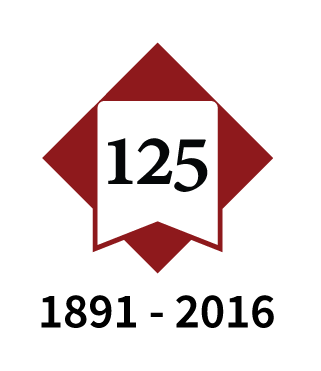The Affordable Care Act (ACA) requires that certain employers provide you with a new tax form called Form 1095-C Employer-Provided Health Insurance Offer and Coverage (or alternatively, Form 1095-B Health Coverage). The form you receive depends on what type of employee you were classified as during the previous tax year.
FAQ
ACA Form 1095 Questions
You will need the information from your IRS Form 1095-C or 1095-B when you complete your 2015 Federal income taxes. This form provides documentation of employer-provided health coverage offered to you as well as enrollment information for you and your dependents as required under the employer shared responsibility provision of the Affordable Care Act (ACA).
If your employer provided you or your family members with health coverage through a fully-insured health plan, the sponsor of the plan providing the coverage will furnish you information about the coverage separately on Form 1095-B.
You may receive more than one form if you changed employers mid-year.
The IRS Form 1095 will be used to complete your U.S. individual tax return. If you receive a tax credit or premium subsidy under the ACA, the form may be needed to complete applicable tax forms.
Otherwise, simply keep the form as your “proof of coverage” for the ACA individual mandate. You are not required to submit it to the IRS with your tax filing in 2016.
Employers issue Form 1095s according to each Employer Identification Number (EIN), under which they operate. If you changed jobs during the year, and that put you in a part of your company that has a different EIN, you will receive a Form 1095 for each EIN of the same company. This may also occur if the employer reorganizes itself, even if you have the same job
There are several reasons why you would receive multiple Form 1095s.
The first has to do with how your medical plan is financed by your employer. Some plans are “fully insured” (e.g. Kaiser, HealthNet Seniority Plus) while others are “self-insured.” The IRS requires different Form 1095s depending on what kind of plan you are in.
If your employer has a self-insured plan, it will issue a Form 1095-C to all current and former full-time employees who were eligible to enroll in the employer’s medical plan in the prior calendar year. So, you will receive a Form 1095-C from your employer whether or not you enrolled in the employer’s coverage.
Even if you are currently on COBRA or are a retiree, if you were a full-time employee at any point during the prior year eligible to enroll in an employer’s plan, you will receive a Form 1095-C.
If your company has a fully insured plan, the plan’s insurance carrier will issue Form 1095-B for anyone enrolled in the plan for even one day of the prior year, regardless of their employment status.
This means that employees and former employees who were full-time during the prior year and enrolled in a fully-insured plan will always receive two Form 1095s, a 1095-B and a 1095-C.
You may also receive two forms for several other reasons: (i) if you changed employers during the year; or (ii) though you did not change employers, your same employer began to use a different employer identification number (EIN) during the prior year.
Your employer is required to send a Form 1095 to all full-time employees regardless whether an employee enrolled in coverage. The form shows whether employer coverage was offered and, if so, whether the employee enrolled in it.
The form will show the lowest cost for the employee-only coverage level. If you are covering dependents or are not enrolled in the lowest cost employee -only coverage, your cost may be different.
This form will only contain information for the months you were covered under a self-insured plan in the prior year.
If you were enrolled in a fully insured plan for any part of the prior tax year, the insurance carrier will send you a separate Form 1095-B or 1095-C showing the period you were enrolled in that fully insured plan.
Please contact the HR Service Team and a specialist will assist you in researching and resolving your concern.
You will receive a 1095-B from your insurance carrier if you:
- …were a full-time or part-time employee enrolled in fully-insured coverage for even one day of the prior year
- …were on COBRA and were a full-time or part-time employee enrolled in a fully-insured plan for even one day of the prior year, regardless of whether you were employed during the year
- …were a dependent of a former employee and were enrolled under COBRA in a fully-insured plan for even one day of the prior year.
- …were a Retiree under the age of 65 enrolled in a fully-insured plan for even one day of the prior year, regardless whether you were employed full-time or part-time during the year
- …were a dependent of a Medicare-eligible retiree and enrolled in a fully-insured plan for even one day of the prior year.
You will receive a 1095-B from Medicare if you were a Retiree age 65 or over, and were enrolled in an employer’s Medicare supplement plan for even one day of the prior year, regardless whether you were employed full-time or part-time during the prior year.
For questions about the IRS Form 1095, contact the IRS Tax Help Line at 800-829-1040 (Mon-Fri, 7:00 a.m. – 7:00 p.m. local time), or visit the IRS website to find information about your tax reporting and Individual Shared Responsibility obligations and other information about the Affordable Care Act.
All full time employees paid by Stanford and other individuals covered by Stanford’s self-insured medical plans will receive an IRS Form 1095-C from Stanford. Employees and other individuals covered by the Kaiser plans will receive Form 1095s from Kaiser. This includes terminated and retired employees who worked at Stanford during the tax year, employees continuing medical coverage through COBRA and retirees under age 65.
The ACA 1095 Portal will launch on December 17 and allows all Stanford employees and individuals who were offered Stanford medical coverage in 2015 the opportunity to “Go Green” and consent electronic delivery of the Form 1095-C. If you prefer to receive the Form 1095-C by mail, you don’t need to take any action as mail is the default delivery method.
If you retired in the tax year and were enrolled in one of Stanford’s self-insured plans before and after retirement, you will receive one Form 1095-C reflecting the full tax year. However, if you changed between a self-insured plan and a fully insured plan, such as Kaiser or HealthNet Seniority Plus, you may receive a Form 1095-C from Stanford for the portion of the year you were employed and were enrolled in the self-insured plan and Form 1095-B from the medical plan insurer for the period of time you were enrolled.
ACA Medical Plan Questions
You can always choose to have a Marketplace plan (a CoverdCA plan) regardless of whether or not you are working instead of a plan offered through Stanford University. The cost of a university plan for a part-time employee could be more than the cost of a Market Place plan. However, if you are receiving a premium discount (or premium tax credit) towards your Marketplace plan while working full-time, this could result in a tax penalty to you. It's not the enrollment in the Marketplace plan, but the discount/credit while working full-time that becomes a tax issue. If you are not working full-time, the IRS allows you to continue receiving any appropriate premium discount or request the tax credit. The discount, or tax credit may change if you have a change in income level.
The Employee-only semi-monthly contribution is $44.77 and the Employee & Children semi-monthly contribution is $268.80. These are the only coverage tiers available. You do not have the option to enroll a spouse or domestic partner on Stanford’s ACA Plan.
No, ACA does not require employers to allow ACA-eligible employees to enroll a spouse on medical coverage. Employers are only required to offer minimum essential coverage for ACA-eligible employees and their eligible dependent children up to age 26.
If it has been determined that you are eligible to enroll in the ACA Plan you will be notified by mail in November. ACA-eligible employees will have a special enrollment period scheduled December 2-16, 2015. Enrollment may be completed online through the My Benefits portal. To login to My Benefits, visit the Cardinal at Work website, click the “My Benefits” button and use your SUNet ID and password to access the ACA-Eligible Enrollment event.
Other ACA Questions
ACA Plan medical deductions are through Payroll deduction. If you do not receive a paycheck for a pay period, or if your paycheck is too low to take a full medical deduction, the “not taken” amount of your medical deduction will be held in the payroll system to be deducted as a lump sum when paychecks resume.
ACA Eligible Questions
In accordance with the Affordable Care Act (ACA) employer mandate, Stanford University must offer certain full time employees and their dependent children employer-sponsored medical coverage. Employees that meet or have met the requirement of 30 or more service hours per week on average are considered ACA-eligible and qualify for medical coverage.
If you are a contingent employee and expected to work 30 or more hours per week (on average) you may qualify for medical coverage either through Stanford or your employment agency. If Stanford is required to offer you medical benefits you will receive a formal notification in November.
Eligible employees will be identified through a look back report which assesses hours worked between October 2014 and October 2015. If during that time you averaged 30 or more hours per week, you are an ACA-eligible employee and qualify for Stanford medical coverage. You will be contacted by Stanford Benefits in November. ACA-eligible employees will be able to elect medical coverage in December through a special ACA-Eligible Enrollment.
There are three methods for determining eligibility under ACA. The first method is conducting a “look back” report of the past year (from October 2014 to October 2015), to determine if the contingent worker averaged 30 or more hours per week based on the actual time worked.
The second is if a contingent worker is hired into a position that will average 30 or more hours per week based upon the standard hours entered into the HR Management System (HRMS).
The third is if the contingent worker is not hired into a position that’s expected to average 30 or more hours per week, looking back over the first year, hire date to anniversary date, to determine if the contingent worker averaged 30 or more hours per week based on the actual time worked.
ACA-eligible employees will be contacted by Stanford Benefits in November and will receive information about ACA-eligible coverage and enrollment by mail.
There are some employees who work for more than one department but under 30 hours per week for each. All hours worked across all departments will be aggregated. If the total is 30 or more, the employee will be considered ACA-eligible and offered the opportunity to enroll for medical coverage.
If it is determined that you are eligible for medical coverage under ACA you will receive a formal notification from Stanford in November with information about the ACA Plan and how to enroll in medical coverage in December.
No, you are not required to enroll for the medical coverage that is offered to you through Stanford. Stanford is required to offer you the opportunity to enroll if you are determined to be eligible under ACA. You should compare the Stanford coverage and cost with privately insured plans, Health Plan Marketplace exchange options and plans offered through Covered California.
Whether you elect Stanford coverage or not, Stanford will still provide you the IRS Form 1095-C each January, which notifies you of the coverage made available to you in the prior year.
If you are covered through your spouse/domestic partner’s health coverage, you do not need to do anything. You are not required to enroll in the medical plan offered by Stanford. Stanford will still provide you the IRS Form 1095-C each January, which notifies you of the coverage made available to you by Stanford in the prior year.

Contacts
For questions about ACA, including the ACA 1095 Portal, ACA-eligibility and the ACA Plan, contact the University HR Service Team at (650) 736-2985 or toll-free at (877) 905-2985.
For tax-related questions about the IRS 1095 Tax form, contact the IRS Tax Help Line at 800-829-1040 (Mon-Fri, 7:00 a.m. – 7:00 p.m. local time).



